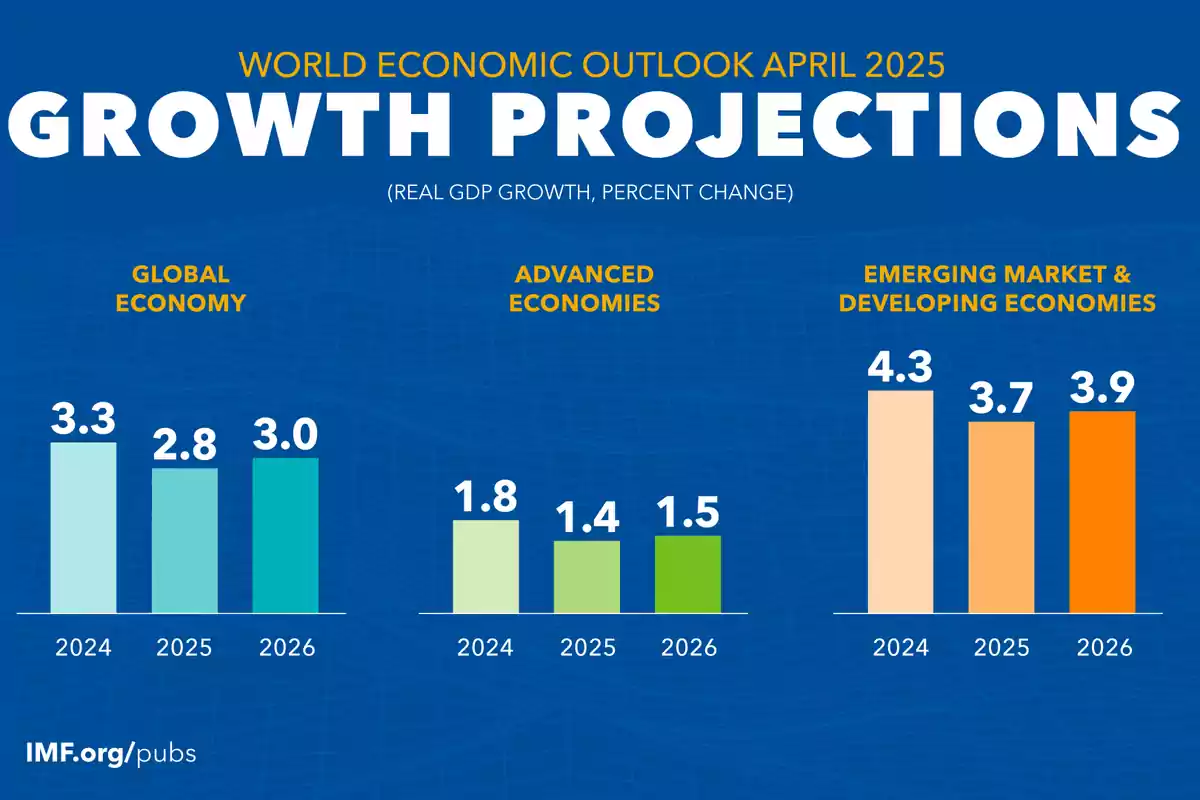
Argentina will be one of the countries that will grow the most in the world, according to the IMF.
An economic growth of 5.5% of GDP is expected, and inflation is projected to range between 18% and 23% annually
The International Monetary Fund (IMF) projects that the global economy will experience a notable slowdown in 2025, as a consequence of the trade war between the United States and China.
However, the economic growth estimate for Argentina remained the same, making it, along with India, the country that will grow the most this year worldwide, thanks to the successful economic policy of the Government of Javier Milei.
In this context, the most recent technical report prepared by the IMF team projects for Argentina an economic growth of 5.5% of GDP and an inflation that would range between 18% and 23% annually.

"We maintain the projection of a 5.5% growth for Argentina, which is linked to the positive surprises recorded, despite the strong fiscal adjustment. We consider that the recovery of confidence has been a key factor for this forecast," said Petya Koeva-Brooks, director of the research area of the organization, when asked whether the reciprocal tariffs promoted by Donald Trump could affect the WEO projections for the country.
In general terms, the IMF reduced its growth projections for the global economy in 2025 and 2026 due to the trade war: it now estimates an expansion of 2.8% for 2025 and 3% in 2026, compared to the 3.3% forecast for both years in the January report.
This implies a cumulative downward revision of 0.8 percentage points. The new figures are well below the historical average of 3.7% recorded between 2000 and 2019.

Regarding the projections, the organization expects a GDP growth of 2% for Brazil, 4% for China, 3.8% for Egypt, 4.7% for Indonesia, 2.7% for Türkiye, among other nations. However, Argentina and India lead the ranking, with 5.5% and 6.2% respectively.

In developed economies, the growth projection for 2025 is reduced to 1.4%. This revision is attributed to an increase in uncertainty, greater trade tensions, and a decrease in demand. Meanwhile, the eurozone would show an expansion of 0.8%, registering a slight decrease of 0.2 percentage points compared to previous forecasts.
More posts: